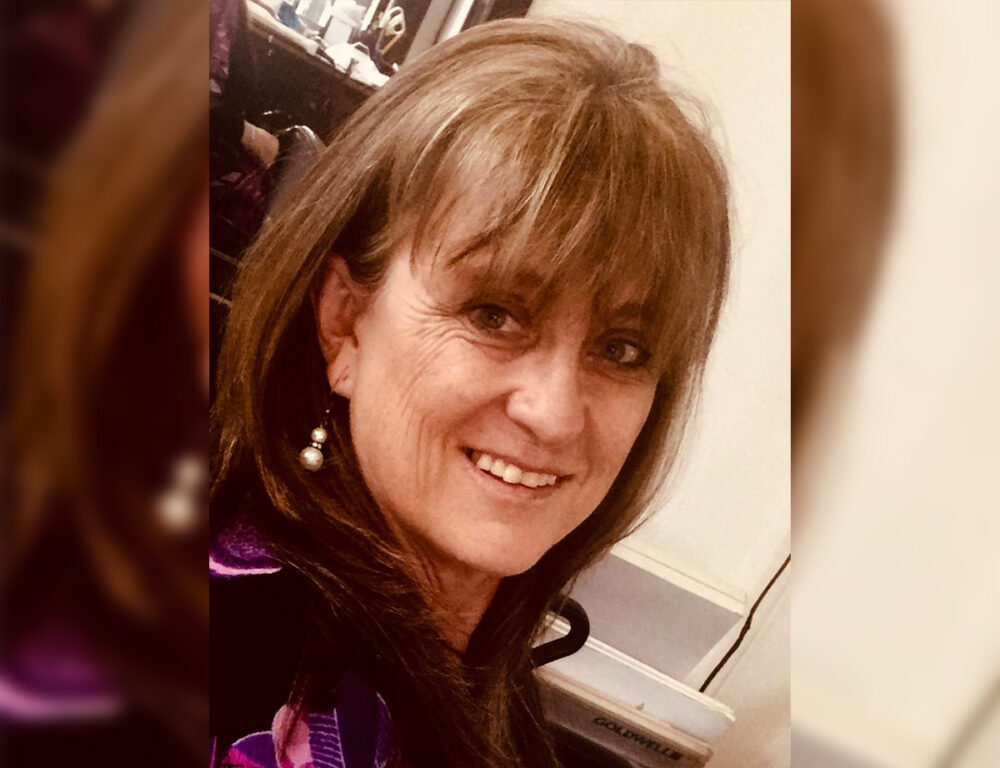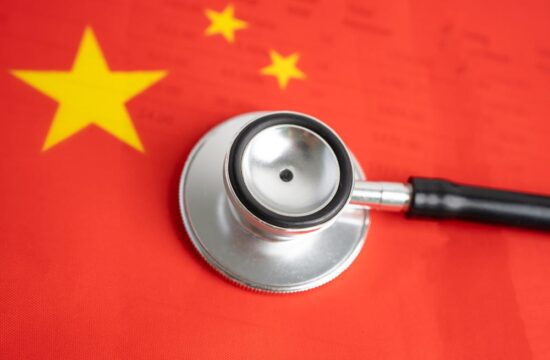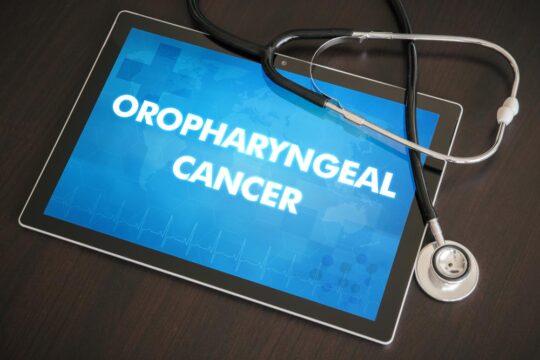Advertisment
Remembering Dr Jackie Stone – 1965-2024

We were deeply saddened to read of the untimely death of Dr Jackie Stone on 3rd October 2024. There have been many moving tributes to her on social media — including this one. I was privileged to interview her in early 2021. At that time, she already had valuable experience of the effective management of covid-19 and had saved many lives in Zimbabwe. We believe that the most fitting tribute to this courageous doctor is to republish the interview in which she described her experiences. Her depth of knowledge and her compassion shine through her words.
For those who are aware of her work this will be a poignant reminder; for those who did not know of her, this the work for which she was disciplined by the Zimbabwean Medical Board and stripped of her licence to practice.
The original videos were viewed more than 200,000 times in the first few days after posting.
The impact of ivermectin use in Zimbabwe
The use of ivermectin for prophylaxis and treatment of covid-19 in Zimbabwe has resulted in a 10-fold reduction in mortality according to Dr Jackie Stone, a family medicine physician in based in Harare, Zimbabwe.
Zimbabwe experienced the first wave of covid-19 infections in July 2020 and by early August the numbers were “overwhelming”.
Dr Stone recalls, “It was just pandemonium. We had patients that we couldn’t transfer out. We had people piling up in the car park dying and it was actually terrible. We had to do what we could to save the lives of these patients”
Ivermectin administration started on 8th August. A colleague who ran a 22-bed hospital in an old-age care home was able to empty the hospital in six days, despite five of the patients being classed as ‘critical’ at the outset. In Dr Stone’s own clinic two critical patients also survived and were discharged with oxygen for use at home. “One of them I really sent home for palliative care, with a very good nurse”. A few days later she was astonished to be told that in spite of apparently poor blood chemistry – including a D-dimer level of 10,000 – the patient felt well and was walking round the garden.
“From 8th August until 24th December I didn’t lose a patient – and if you look at our patient group, 26% of them [had oxygen saturations] of less than 80%”, she said
Thereafter, information about ivermectin and its effectiveness “spread like wildfire on social media, and the whole country became aware of ivermectin”, says Dr Stone.
The death rate rose sharply in January and peaked on 25th at 70 deaths per day. Official authorisation for the use of ivermectin was granted on 26th January. Just one month later, on 26th February, the covid death rate had fallen to zero. Sales figures tell the story clearly. Retailers reported a 35-fold increase in ivermectin sales; distributors noted that whereas sales had amounted to 1057 bottles in January 2020, in January 2021 more than 8500 bottles were sold. Over the three-month period, December, January and February, 500,000 doses of liquid ivermectin went out.
How ivermectin works – and how this plays out in practice
Dr Jackie Stone, who has treated numerous covid-19 patients, explains how ivermectin is used in early-stage disease to prevent progression and in late-stage disease to hasten recovery.
Understanding how the drug works helps to point the way to effective treatment. Ivermectin works at several points in viral replication. Ivermectin coats the virus, binding to the spike protein, which prevents it from entering cells both via the ACE2 receptor and the CD147 receptor. Second, it inhibits RNA polymerase. It is also a zinc ionophore – and zinc inhibits RNA polymerase in a dose-dependent manner. Using the two drugs together should ensure robust inhibition of RNA polymerase. “In a docking study it was also found to bind very tightly to RNA helicase. Now, when RNA polymerase has finished its work, you’ve got a double-stranded piece of RNA, you need to separate that and RNA helicase does that. Ivermectin in vitro and in computer studies has been shown to bind tightly to the helicase and we know that it has activity against all RNA viruses like yellow fever and West Nile virus [amongst others}”, explains Dr Stone.
Early stage covid-19
“Taking the early phase, if we can coat the virus, stop RNA polymerase, stop RNA helicase we’ve done quite a good job at the at point” , says Dr Stone. The addition of doxycycline, which is also a zinc ionophore (and therefore it will inhibit RNA polymerase) and also binds to double-stranded RNA ensures that there are two agents shutting down viral replication at three points.
“What I do in the early stage – I want to hit them hard because I want to shut this virus down – we cannot afford for our patients to become hypoxic. They drive around the city looking for oxygen and dying. We need to smack it before they hit the inflammatory stage, before they hit the thrombotic stage and before their oxygen saturations drop – so that’s part of the reason that we are so aggressive with treatment”, she says.
Later stage covid-19
“If I’ve got a patient in a later stage ………………. the virus binds to the CD147 receptors and cross links red cells, white cells and endothelium and you get ‘sludging’. Effective treatment with ivermectin and doxycycline reverses these effects. “It’s going to be like Lego that comes undone and suddenly the patient will re-perfuse”, explains Dr Stone.
“The other interesting thing is that after we give ivermectin the D-dimer goes through the roof” she says. D-dimer, she emphasises, is a fibrin degradation product and therefore a marker of clot resolution. “….so it means that the clots and the fibrin is breaking down”, she adds.
A real-life example of this phenomenon was a patient called Joe. His D-dimer was 2,500 on day 1. He went home and the next day’s result was reported as, ‘Greater than 10,000, unrecordable’. Fearing that the patient might have died, Dr Stone immediately telephoned the nurse who said, “He is hugely better. He’s chatting, he’s eating, he’s wanting go for a walk”.
Thinking about it, “…when the D-dimer rockets it’s a marker of clot resolution; it’s a sign the patient is actually getting better”, concludes Dr Stone.
Managing covid-19 with ivermectin in Zimbabwe
Dr Stone describes how large doses of ivermectin are safe and effective for the treatment of covid-19 and side effects are temporary and tolerable.
“The first thing you give is the ivermectin”, says Dr Stone. Initially, for mild disease, her team used doses of 0.2 – 0.3 mg/kg on days 0, 4 and 8 but soon found that 0.2 mg/kg for five days was more effective. Later the dose was further increased to then 0.3mg /kg for five days, based on information from colleagues in South Africa.
“Now, because we’ve been using it for a long time, we’ve got very confident with its safety”, says Dr Stone. Falling sick with covid-19 themselves has given Dr Stone and her team deeper insights into the way that ivermectin can be used for the best effects. “We’ve realised sometimes you’ve got to give 0.2mg/kg, then hit it again with 0.2mg/kg, then hit it again with 0.2mg/kg and if you think that you are going to lose the patient, we know that below 0.6mg/kg is definitely safe so we give 0.6mg/kg”, she says. For example, for a female patient who presented with oxygen saturation of 43%, Dr Stone recommended a dose of 0.6mg/kg, to be repeated if necessary. “The worst thing that’s going to happen is that they’re going to get a visual disturbance. You warn them that they may get temporary blindness but that it will not last”, she adds.
Single doses 70 – 100mg
“Our introduction to bigger doses actually came quite early”, explains Dr Stone. “One of the lessons I discovered was that if you’re going to give a hypoxic patient medication, make sure you tell their partner or the person who is giving the medication what to do, because they appear to all intents and purposes to be communicating with you but they are effectively not quite there”.
Two patients illustrated this situation clearly: The first was a female patient who presented with oxygen saturation of 89% and was systemically very unwell. She was given five 12 mg tablets of ivermectin to take once a day herself and an additional 12mg tablet as a prophylactic dose for her husband. Dr Stone recalls, “In the morning I phoned her and she’s superbly well. She said, “Oh, I’m so grateful to you, I’ve been so sick, this is fabulous….” “. Further enquiries revealed that she had taken all six doses (a single dose of 72mg) herself on the previous evening. “She only weighs about 60kg – and she had no side effects, which is quite remarkable”, notes Dr Stone.
Dose escalation
The other patient was a man who had been very sick for five days despite taking 12mg ivermectin a day for five days. He presented with oxygen saturation in the low 80s. “At this stage I was starting to see a pattern ….. if we’re underdosing them, there’s a problem because they’re not getting better …… and if your viral load is very high and you don’t have enough coating the virus is going to escape and replicate so our protocol now is to escalate the dose if there’s no response in the first 24 hours”, says Dr Stone.
She recalls, “He came in and said you just need to do something”. She explained that she would switch his dose to 20mg/day for a further five days. “I laid everything out, turned round and he’d taken the entire 100mg as a single dose. So, he was in front of me so I was thinking, do I pump his stomach? What do I do? And I looked at the data. You know they’ve used up to 2mg per kg – 20 times the dose – in the malaria studies and in the Kenyan studies”, she said. “Doctors in Africa are not scared of this drug – it is a lot safer than paracetamol – so they are relaxed about it”, she adds. In the evening the patient telephoned and said, “I’m feeling absolutely great – I’m off to go and hit some balls”. He then went to the driving range to play golf. He had no blurred vision. “Interestingly, the two patients who took big doses that were thin did not have blurred vision”, notes Dr Stone. Other patients have reported visual disturbances. One 120kg patient he took 100mg on his own initiative and then telephoned Dr Stone to say, “I don’t know what’s going on here – I’m dizzy and I’ve got blurred vision”. She responded, “Don’t worry, it will resolve within 48 hours. You’re not going to die from it but you were very sick with covid”. She comments that he made a significant recovery quite quickly.
The patient experience of ivermectin
Dr Stone describes how her own experiences of taking ivermectin for severe covid and those of others have provided further insights into the value of this drug.
During the July –August wave of coronavirus infection a number of people who were fairly senior in Government, public services, the army, the air force and industry became very sick. Dr Stone explains, “They heard that this treatment was working and they sought us out – and they got better. So, we have high-level people who got better and there’s nothing quite like experiencing – and I have – the recovery and the rapidity of the recovery on ivermectin and our adjuvant treatments. The anxiety when you are hypoxic is difficult describe – there’s a real sense of impending doom, you know you are going to die. Then you take medication and it resolves. Nothing convinces anybody quite as spectacularly as a person who has gone from 88% to 95% [oxygen saturation] – he doesn’t really care what the double-blind randomised controlled trial says – he’s experienced it for himself”.
Personal experience of covid-19
Dr Stone herself has had covid-19 on two occasions. Both episodes were the result of inadequate prophylaxis, she says. She recovered from the first, mild episode very quickly. The second time she was heavily exposed as a result of spending four hours close to a very sick patient who ultimately did not survive. She went home, used a nebuliser and took 20mg ivermectin “then we went into four or five days from hell – we were busy 24/7, the phone was going continually and we were visiting patients in their homes”, she says. She took no prophylaxis over that period because “in her head [she] only needed to take ivermectin once a week”, she remembers. “I really wasn’t feeling great and on 3rd January I became very unwell – it was like getting full blown malaria and secondary drowning simultaneously”, she says. One of the other doctors treated her and she took 100mg of ivermectin and clearly remembers the effect it had.
“It was the most incredible feeling it was like my solar plexus warmed up. I was very peripherally shut down – they were struggling to get a line in – and I’ve got huge veins – people used to practice cannulating on me at med school. The feeling spread out from my midriff all the way out to my peripheries over a couple of hours and my oximeter – I was going really fast, pulse 140 – but the oximeter wave form had gone from very flat and slightly irregular – I went into atrial fibrillation (AF) and I was going into paroxysmal AF and I had quite a lot of chest pain as well – and suddenly I started to hear the beep, beep, beep and you saw the wave form getting bigger and bigger. We have a nurse who is probably the best observational nurse I’ve ever known – he’s taught me so much because he’s by the bedside for 12 hours. Spencer said to me “Doc, when that happens, they’re ready to go home. You can send them home on oxygen it’s fine now they’re reperfusing”. So – if covid is a thrombotic event, ivermectin is a reperfusion drug.”
In addition to these effects, “The brain fog lifts, the feeling of impending doom lifts, the body pain, the systemic symptoms all start to go away, the headache goes away” she adds. The roof looked as if it was a wave pool but she told herself it was a visual side effect of ivermectin and thought, “Excellent! I’ve had enough [ivermectin]!”
No more fear of covid
On reflection, Dr Stone says, “I’m not scared of this disease at all any more, I really am not. Every single patient that we have with sats of over 70% survives. ….. My idea of the perfect job is that I see a patient for four hours and I fix them and we don’t see them again. They come in, they’re very, very sick. Six hours later they’re dramatically better and you send them home on oxygen only – that’s fabulous! Patients and families are very grateful and it’s very satisfying seeing the rapid improvement.”
No more covid in Zimbabwe
Speaking of people with covid-19 Dr Stone says, “They used to [seek me out] – but there isn’t any more covid in Zimbabwe!
At the peak of the January wave, she could have as many as 20 WhatsApp calls per hour and had pre-programmed automated replies to direct people to nurses for assessment and doctors for prescriptions. “We probably managed hundreds of patients a day within our team and by outsourcing it to teams elsewhere”, she says. However, since mid-February the call rate has fallen sharply. “People tend to phone me or one of the GPs that follows our protocol. I think I had two or three phone calls in the whole of last week and this week I’ve had one and they’ve all been early disease. Everybody knows because everything I have sent out emphasises, treat early, treat early, treat early… Do not go home and wait to get sick. Contact us by phone and we will tell you what to do or we will send nurses to you”.
Lessons from the Zimbabwe ivermectin experience
Reflecting on ivermectin use in Zimbabwe, Dr Jackie Stone describes how covid-19 is now under control and everyone has the drug in their home medicine cupboard.
In patients with oxygen saturations of 39-90% there was a 3.8% death rate amongst patients cared for by the Hospital at Home scheme compared to the State hospital that has a 35% death rate – almost a tenfold reduction in mortality. In Zimbabwe at the moment, covid is very much under control. Dr Stone is concerned that people might become complacent and discontinue regular prophylactic doses of ivermectin. This matters because there is some concern that Zimbabwe tends to follow Kenya where a third wave is occurring at present.
Ivermectin in the medicine cupboard
Everyone in Zimbabwe now has ivermectin at home and they know the correct protocol for prophylaxis and treatment. Informal communication via WhatsApp usually ensures that important information is rapidly disseminated throughout the country. “People know exactly what to do. So, this time people are getting sick but it’s common for someone to come into me and say, “Listen I started feeling a bit fluey last night – I hope you don’t mind I took some ivermectin last night and I’m here this morning just to check”. So, patients see this as a safe, self-administered medication”, says Dr Stone.
WHO recommendation
Regarding the recent WHO guidance on ivermectin Dr Stone said, “I find it very hard to understand how they can say that there is not sufficient evidence. There are three thousand patients plus in, I think, 24 trials where they demonstrate an over 75% reduction in mortality. Those figures fit exactly with what we have seen”.
She also felt that Zimbabwe was very fortunate to have decisive leadership in the Health Department. “Our Permanent Secretary of Health is a military man, a practical man and a solution-based man and he likes fast solutions. We’ve been very lucky that we were permitted to use it and we can freely use it as doctors now. And for us it makes absolute logical sense in terms of its mechanisms of action. It fits with what we see clinically and so people who [want to] follow the WHO guidelines can do so but if we follow them, we are going to go back to 70 deaths a day”, she said.
Experience of HIV and malaria
Experiences with treating HIV and malaria had taught frontline doctors some useful lessons about managing infectious diseases. “Our lesson from HIV is, ‘hit it hard, hit it with combination therapy and hit it early’ “, says Dr Stone. Waiting until the patient has full blown AIDS is costly and risks a poor outcome. “Our lessons from malaria are that if we were to leave a malaria patient to the point where their blood is sludging and they have cerebral malaria we would be seen to be criminally negligent and that mentality pervades through covid because all of our doctors know what happens if you don’t treat malaria early – you end up with a dead patient”, she says. Rapid, aggressive early treatment is the key to success. “I know that when I was working in London, I had to be really careful about aggressively managing patients because you could be seen as a cowboy but you can become so cautious that you are far more guilty of acts of omission than cowboy acts of commission. And being very aggressive with a drug that has caused 16 deaths in 32 years in four billion doses is not being a cowboy – it’s trying to save the patient’s life”, says Dr Stone.
Expertise and evidence
“I honestly believe that doctors all over the world have become more scared of the regulators and the lawyers than they are of losing a patient”, says Dr Stone. She believes that clinical decisions should be informed by external evidence but guided by clinical expertise and the patient’s wishes.
“The best possible option for your patient involves the clinical experience of the treating team, the best available evidence and something everyone’s forgotten – the patient’s needs and preferences – and if you can get those three right you’ve got your ideal outcome. Good doctors use both individual clinical expertise and the best available external evidence”, she says.
About Dr Jackie Stone
Dr Jackie Stone held degrees in medicine and medical biochemistry from the University of Cape Town, South Africa. She worked in London, Dubai and Australia and held a Diploma in Aviation Medicine. At the time of this interview, she worked in family practice in Zimbabwe.





